by Ocean Robbins: An old Hasidic folk tale tells of Isaac, a man from the city of Krakow who dreams of a treasure hidden under a bridge in Prague, 300 miles away…
We are proud to announce a new partnership with John and Ocean Robbins and the Food Revolution to bring our readers Summits, Seminars and Masterclasses on health, nutrition and Earth-Conscious living.
Sign Up Today For the Healthy Brain Masterclass
After having the same dream each night for a week, he decides to undertake the long and arduous journey to dig and claim the treasure. When he arrives, however, he finds a platoon of soldiers guarding the bridge night and day. There is no way he can dig without arousing their attention and ire.
After wandering around the bridge for a few days, Isaac is confronted by a soldier: “What are you doing here?” Flustered, he blurts out the truth about his dream. The soldier laughs in derision: “Are you so naive to believe in dreams? I keep having a dream that if I travel to Krakow and dig underneath the house of a man named Isaac, I shall find a treasure. Do you think I’m going to travel 300 miles just because of a silly dream?” Stunned, Isaac returns home, gets a shovel, and discovers a treasure buried under his own house.
I can tell a similar story about superfoods. When we hear that term, most of us think of the fruits, roots, or leaves of exotic species found in what for many of us are far away, inaccessible places — high in the Himalayas (like goji berries) or deep in the Amazon basin (like açai berries). And while longevity-enhancing, disease-fighting, and health-promoting plants can be found all over our planet, many of those that deserve superfood status have been right under our noses all along.
Real Superfoods Are Also Affordable
Every few years, it seems, some hot, new “superfoods” hit the market. They might show up in a host of powdered supplements, or trendy dishes like açai bowls. Many natural foods stores and upscale supermarket chain stores will advertise these products in commercials and weekly flyers.
I’m not saying these products lack nutritional value. They may very well perform as promised. The issue is that they are typically quite expensive for the average person.
Ginseng, for example, can cost $1 per gram or more. That’s around 50 times more than a super-healthy commonplace spice like oregano, which goes for around two cents per gram.
The high prices of exotically sourced superfoods may reflect their scarcity due to the labor that goes into growing and harvesting them, and the overhead gleaned by distributors and marketers who see the potential for huge financial returns. And in terms of environmental costs, they often leave a larger carbon footprint than locally sourced foods and ingredients.
No doubt these foods are potent, but how “super” is a food that only the wealthiest can afford? The problem isn’t just that ordinary citizens in developed countries can’t access the wondrous properties of ginseng, noni, or acai. It’s also that these foods are often taken from indigenous communities who may rely upon them for their own nutritional needs. And that increased demand for exports can lead to land use change and water depletion, damaging indigenous ecosystems.
So it’s important for us to discover the truth — that we already have access to many truly remarkable superfoods right under our noses. In this article, I’ll show you what they are, why they’re so super, and how to utilize real superfoods in your daily meals.
What Is a Real Superfood?

Superman can fly. Elastigirl can stretch her limbs. Aquaman can shoot water from his hands. Superheroes all, right? But what about Batman? He just has a ton of money, a cool car, a secret cave, is trained to fight well, and (at least in the TV show that aired when I was growing up) cartoon words like “Boff!” and “Pow” appear in the air when he hits people. Does that make him a superhero?
My point is, there’s no universally accepted, clear-cut definition of a superhero (or a superfood), and no definitive list of them. So that means I get to define the term for the purposes of this article.
Here’s my best shot at defining a real superfood: Superfoods are inherently functional foods that have health benefits beyond just providing basic nutrition. They are exceptionally nutrient-dense, meaning you get a lot of nutrients per weight, volume, or calorie. And because they deliver high concentrations of vitamins, minerals, and antioxidants, they also have disease-fighting power.
So far, that also tracks with the exotic superfoods that have the biggest marketing budgets. But I want to add one more qualification — nutrients per penny.
The Most Nutrient Dense Foods for Your Money
As far as I’m concerned, the real superfoods are the ones that do the most good for the most people.
That means they’re not only super healthy, but also affordable, easy to use, and widely accessible. Real superfoods provide antioxidants, flavonoids, and micronutrients that are stunningly powerful in fighting chronic diseases like cancer, dementia, heart disease — and even wrinkles.
These nutritional powerhouses can boost your immune system, improve your digestion, give you better energy, and even contribute to a more satisfying sex life. They can be grown and harvested in ways that benefit the people who share their ecosystem. And you likely already have some of them sitting in your pantry or refrigerator, just waiting to be used and appreciated.
Top Superfoods Worth Knowing About & Their Health Benefits
Strap in for a whirlwind tour of nine separate categories of real superfoods. We’ll just take a quick peek at each category — some of the health benefits of superfoods, a couple of prominent nutrients, and some ideas about how to use them.
(Doing them all justice would take a whole book — so it’s a good thing Food Revolution Network’s The Real Superfoods Cookbook will be coming out in 2023. Join our email list for updates about how to preorder it!)
Leafy Greens
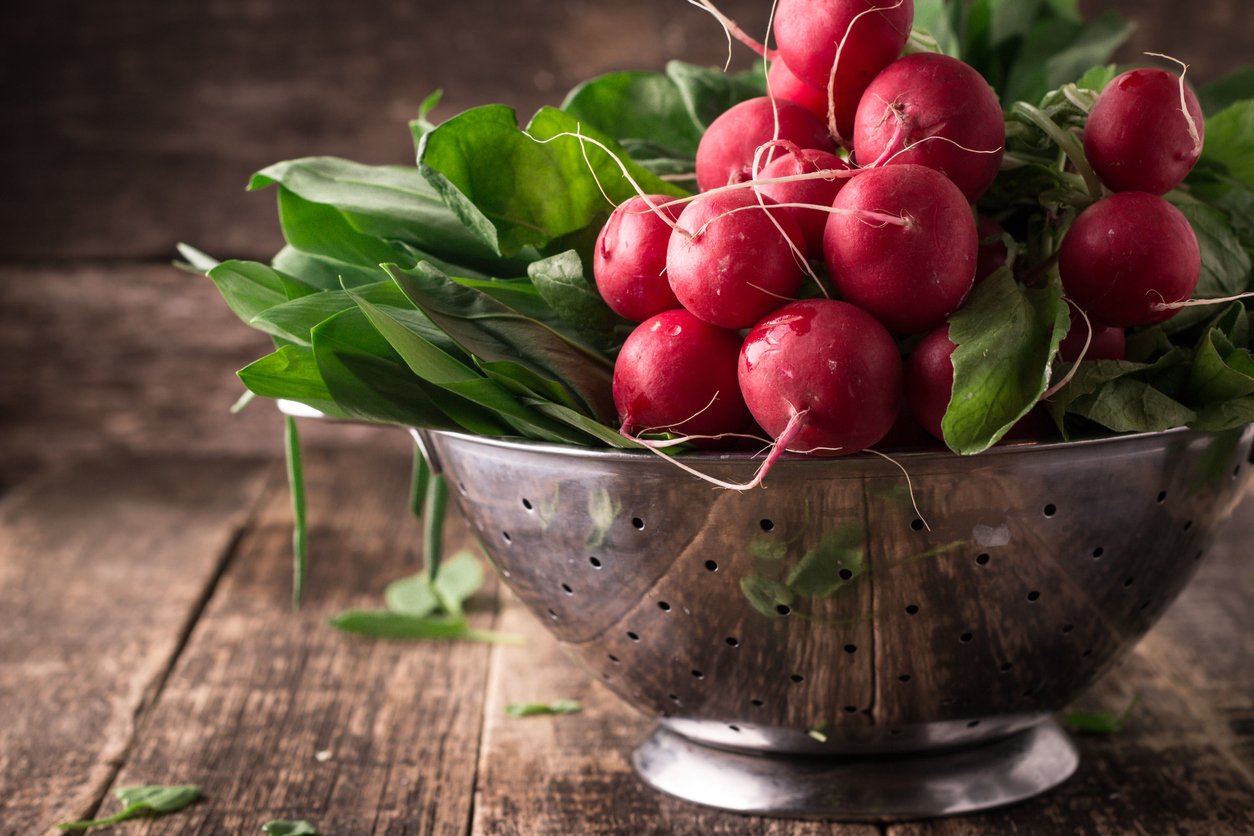
The leafy green superfood category includes lettuces, cruciferous greens like arugula and kale, taproot greens like radish and beet, and greens from the chicory and amaranth families.
Low in calories and rich in fiber, leafy greens are packed with carotenoids and antioxidants and full of vitamins such as vitamins A, E, and K1, as well as B vitamins and minerals like calcium, iron, and magnesium. They also boast high concentrations of dietary nitrates (not to be confused with the nitrites and nitrates that are added to processed meats), which are natural vasodilators that are good for your arteries and protect your heart.
In addition to promoting cardiovascular health, leafy greens also fight cancer, protect your brain from dementia, and combat type 2 diabetes.
You can add leafy greens to your diet in many wonderful ways. Salads, stir-fries, and steamed side dishes put them front and center. Soups, stews, and casseroles can incorporate them as supporting actors. And for picky eaters, you can even hide them in smoothies and dips.
Mushrooms
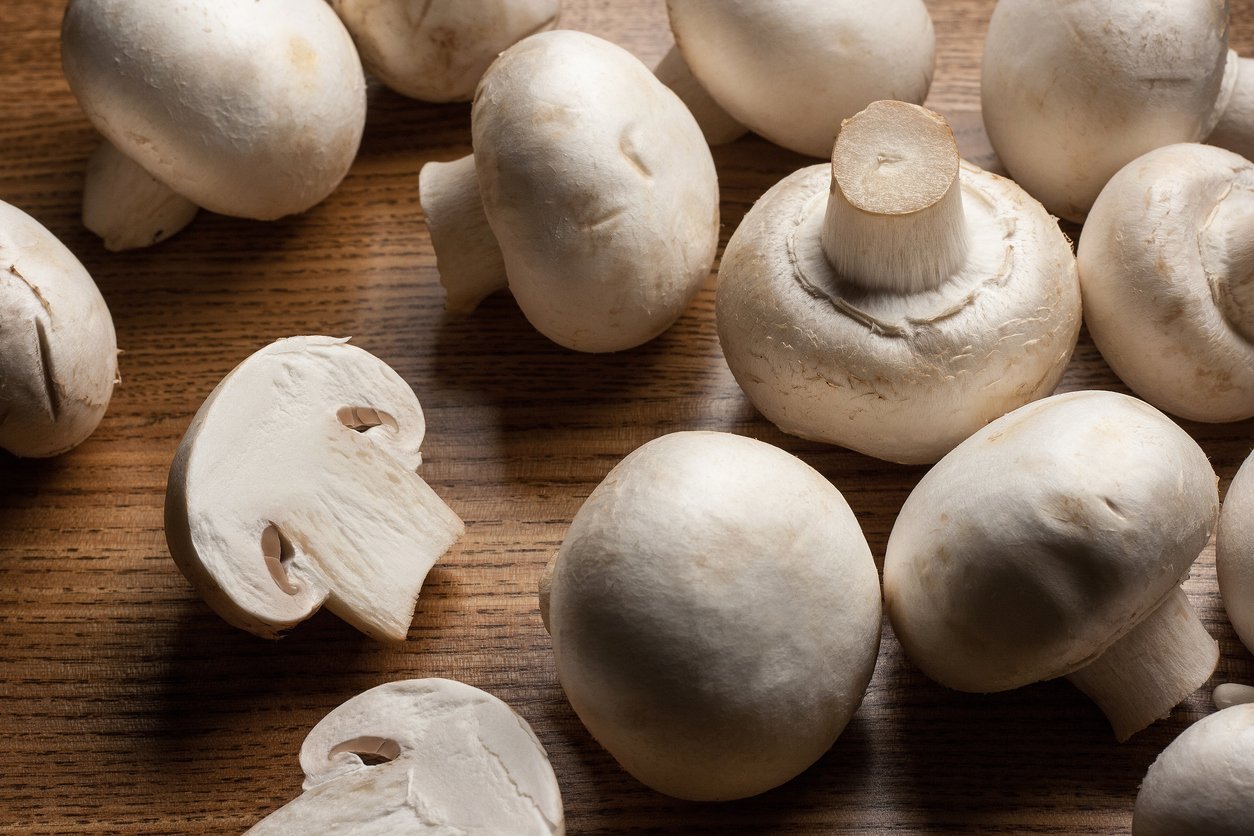
In addition to ordinary white button mushrooms, you can also find brown mushrooms, larger portobello mushrooms, and other mushrooms such as shiitake, oyster, and chanterelle.
While they’re all great in their own ways, it turns out that those commonplace (and usually much less costly) white button mushrooms are one of the most nutritionally potent superfoods you can eat. Low in calories and high in protein, mushrooms are also incredibly high in antioxidants, packed with B vitamins (and even vitamin D when they’re exposed to the sun while growing), and high in minerals such as selenium, potassium, and copper. They also contain two types of important dietary fibers: beta-glucans and chitin.
Mushrooms offer numerous health benefits, too. Thanks to their particular kinds of fiber, they promote gut health. One study of over 2,000 Chinese women found that eating just a third of an ounce of cooked mushrooms (approximately half a button mushroom) daily cut their risk of breast cancer by 64%. Mushrooms also protect your brain and heart, support your immune system, and reduce your risk of developing type 2 diabetes.
Mushrooms add a rich umami flavor to dishes, which makes them an excellent addition to soups, stews, and stir-fries. You can even use them as the basis for veggie burgers and other meat analogs. They’re also tasty when grilled, used in casseroles, and as a classic pizza topping.
Legumes
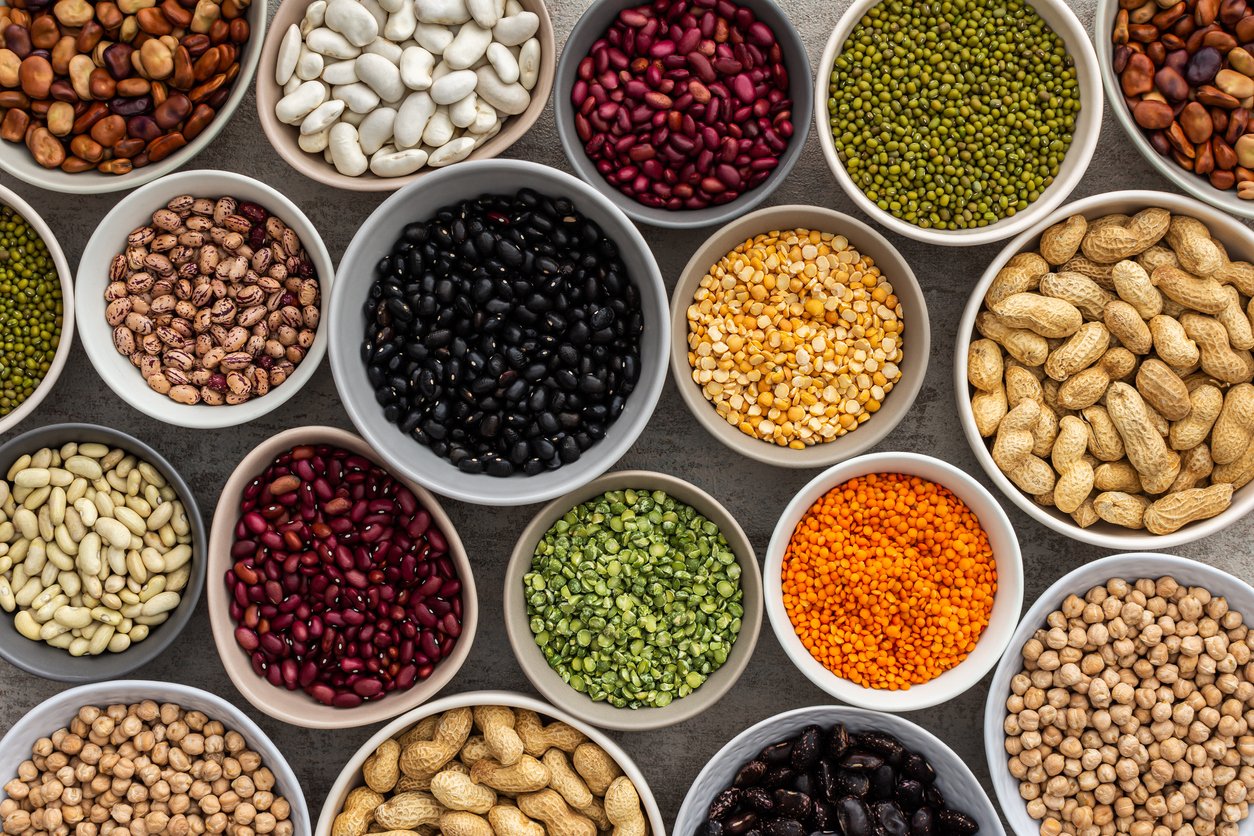
The legume family includes beans, lentils, peas, and even peanuts. They’re highly valued for their nutritional benefits all over the world and, in fact, Blue Zone research has identified them as the food group most highly correlated with human longevity.
Significant sources of dietary protein, legumes are high in fiber and resistant starch. They contain dozens of antioxidants, phytochemicals, and flavonoids, and are an excellent source of essential minerals such as iron, calcium, zinc, and magnesium.
Legumes can extend your life through a variety of mechanisms. They protect against cancer, cognitive decline in the elderly, and heart disease. They also support healthy weight management, healthy digestion, and blood sugar regulation, all of which can help prevent type 2 diabetes.
In case I need to say it, dried legumes must be soaked and cooked or soaked, sprouted, and cooked before you eat them (except for lentils, which can skip the soaking step). Cooked legumes go well in soups and stews, casseroles, and salads. You can add them to pasta dishes and grain bowls, or blend them into dips and sauces (I’m looking at you, hummus). You can even use them in desserts like black bean brownies (seriously, it’s a thing!).
Berries
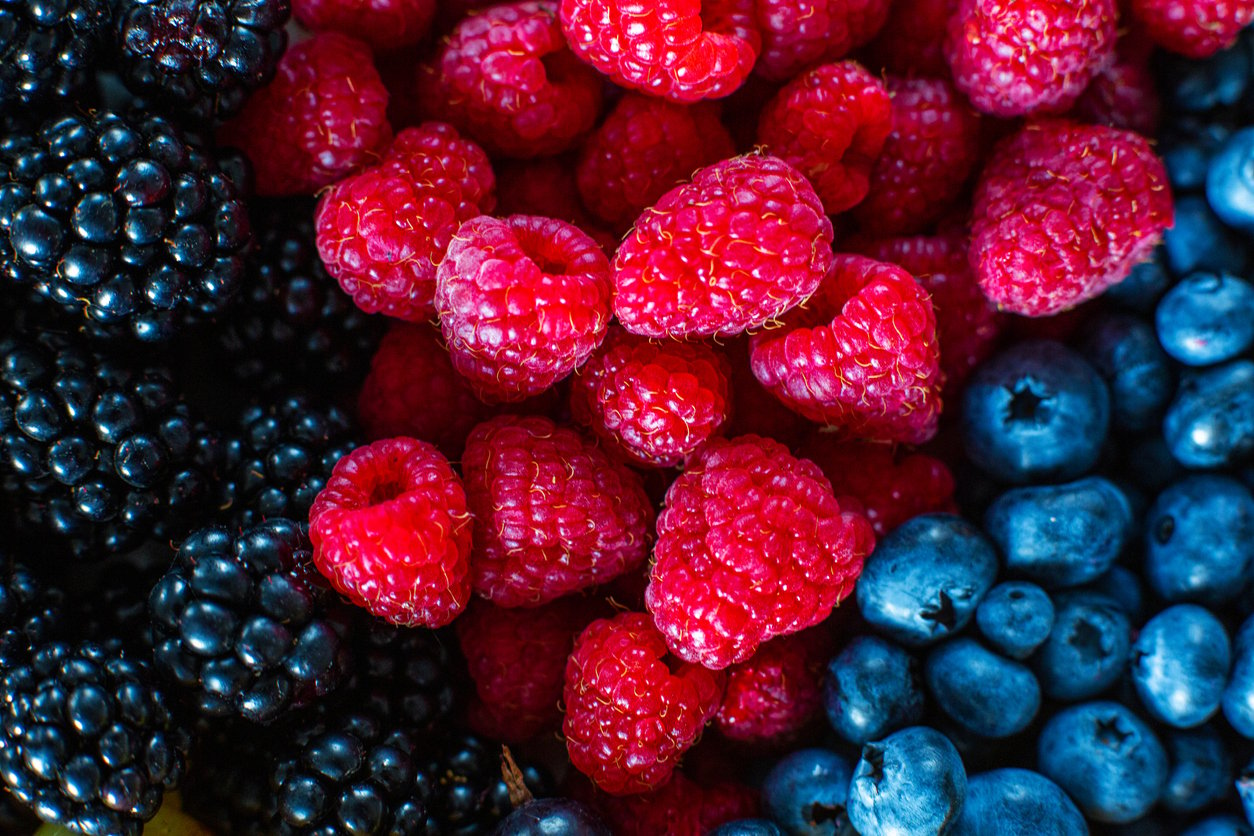
Delicious, colorful berries are also some of the healthiest foods you can find. And you don’t need to travel to the Amazon to find them. Popular berries include strawberries, blueberries, raspberries, blackberries, and cranberries. And if you live in an area where wild berries grow, you might find other yummy and healthy berry varieties that will never make it to supermarket shelves.
Berries get many of their nutritional bragging rights from their huge antioxidant capacity. Those with dark blue or red hues signal the presence of anthocyanins, polyphenols, and antioxidants like resveratrol. Good sources of fiber, many berries are high in vitamin C, manganese, and vitamin K1.
Berries offer many health benefits. They can lift mood and help prevent depression, preserve cognitive function as you age, and prevent several neurodegenerative diseases such as Parkinson’s. They also combat cardiovascular disease, cancer, and even acne.
One of the best ways to get berries into your diet is simply to pop them into your mouth. Fresh, sweet, juicy berries make one of the world’s all-time best snacks! You can eat them for dessert, either on their own or as part of a fruit salad or fruit compote. Berries also add sweetness and flavor to savory dishes (except for cranberries, which offer tartness). You can blend them into smoothies and smoothie bowls, freeze them into popsicles, and blend them into sauces, salad dressings, and dessert toppings.
Alliums
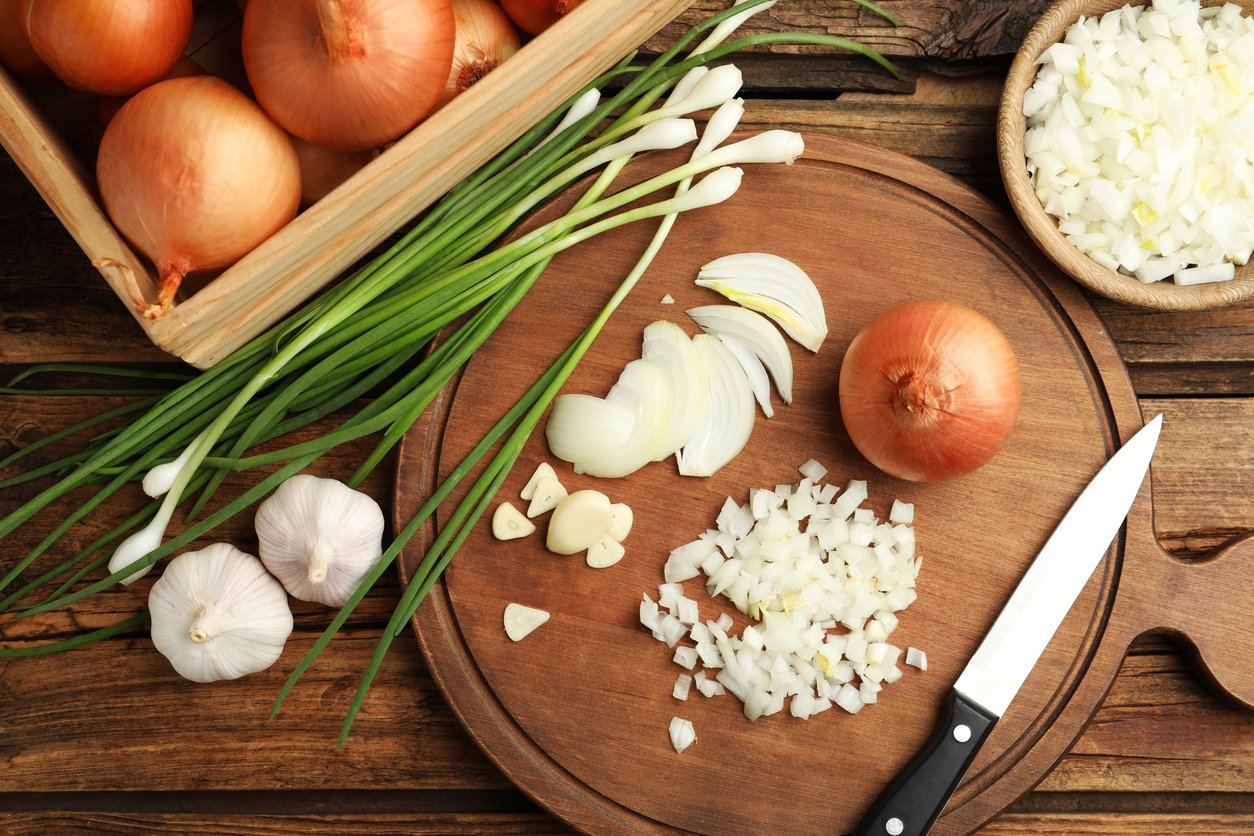
The alliums are better known as the pungent and culinarily indispensable onion and garlic family. They include onions and their relatives like leeks, scallions, shallots, and chives, in addition to several varieties of garlic.
Alliums’ best nutritional feature is the amazing amounts and activity of their antioxidants. Many of these are powered by the sulfur they contain in the form of organosulfur compounds (the source of their pungent aromas). Rich in soluble fibers such as fructans and inulin, alliums also provide a variety of vitamins, including B vitamins (especially folate) and vitamin C, and minerals such as potassium, selenium, and manganese. And in a neat trick, alliums help promote the bioavailability of other minerals, including iron and zinc.
Alliums are nutritionally versatile superfoods. They strengthen the immune system in its ability to fight infection, slow aging by combating inflammation, and protect against many cancers. They protect your heart and significantly lower your risk of developing cardiovascular disease. And their soluble fibers support a healthy gut.
The only place I can think of where you should absolutely not use onions or garlic is dessert. (I hear that garlic ice cream is a thing in Gilroy, California, but I have no plans to try it.) But just about any savory dish can be enhanced by the powerful flavors of cooked alliums.
Many dishes begin with a base of sautéed onions and/or garlic, or a variant like shallots or leeks. These include sauces, soups, and stews; stir-fries and scrambles; pasta dishes; and a variety of mains and sides from around the world. Cooked and raw alliums also add flavor to grain bowls and salads.
Herbs and Spices
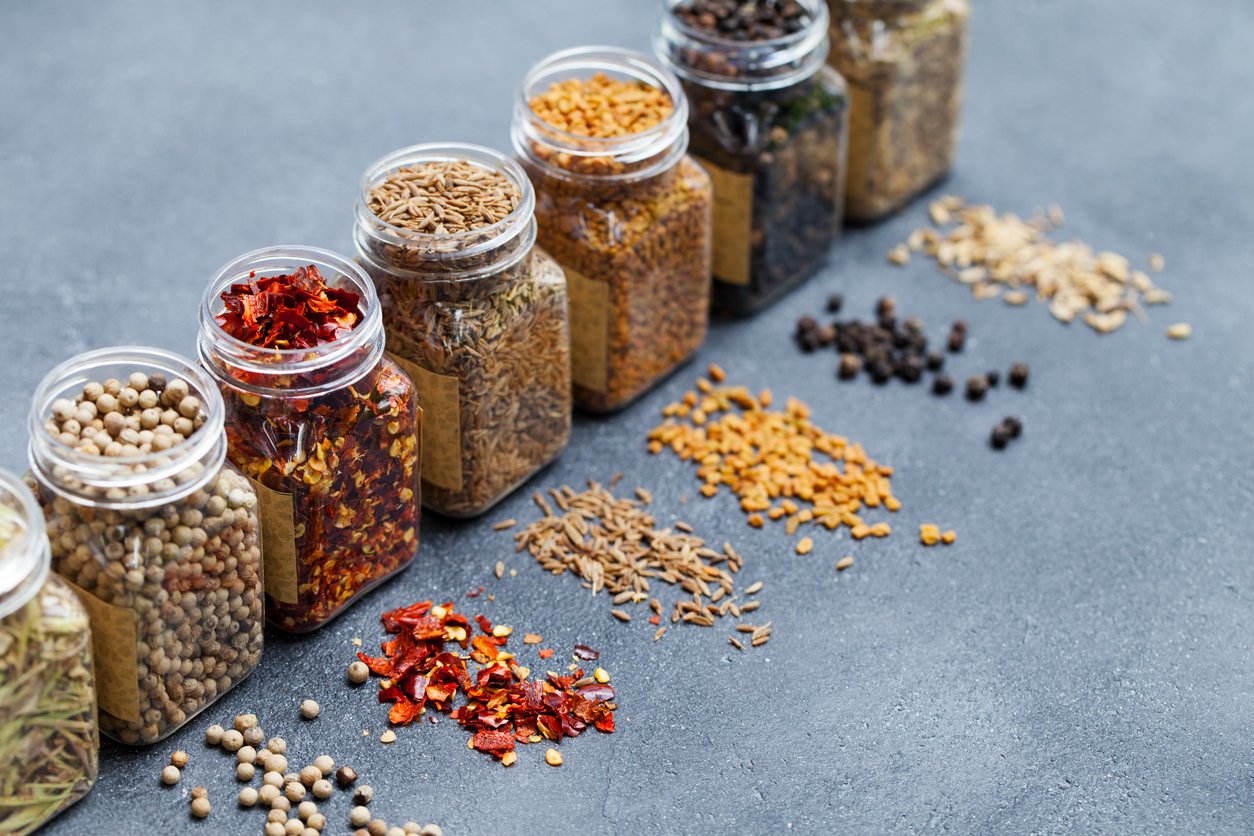
Not only are many herbs and spices delicious and aromatic, but they’re among some of the healthiest foods ever studied. So in addition to making other healthy foods tastier, they provide giant nutritional benefits in their own right.
Common cooking herbs include parsley, basil, thyme, cilantro, dill, oregano, rosemary, mint, and sage. The most common spices you’ll find in any supermarket include black pepper, cinnamon, paprika, garlic and onion powder (alliums in the house!), powdered ginger, cloves, cumin, ground chili peppers, turmeric, and cardamom.
Their specific nutritional profiles vary, but most herbs and spices are superfoods in their own right, rich in antioxidants, which give them their disease-fighting properties. For example, chili peppers are an excellent source of antioxidants such as vitamin C, carotenoids, and flavonoids. Leafy herbs like parsley, cilantro, and basil contain high amounts of vitamins A and K1. Cumin is rich in minerals like iron, magnesium, calcium, and manganese, and contains omega-3 and -6 fatty acids.
Like many superheroes, spices can sometimes bring out the best in each other. Black pepper combined with turmeric, for example, increases the bioavailability of curcumin (the active polyphenol in turmeric) by 2,000%.
Many herbs and spices contain compounds that soothe the GI tract and promote digestive health. Some protect against cancer, some support cardiovascular health, some protect the immune system, and some regulate blood sugar and prevent type 2 diabetes. And many have been used for centuries to reduce pain and inflammation. While specific herbs and spices have specific uses and benefits, the key thing here is variety. The more different kinds you use, the more superfood benefits you’ll get.
Use herbs and spices in your cooking to add flavor, from sweet to umami to herbaceous to spicy. You can keep dishes exciting while ditching the excess sugar, salt, and oil, making them healthier at the same time. Experiment with different flavor profiles and turn an ordinary dish into a gourmet one.
Certain herbs and spices, such as cinnamon, cloves, nutmeg, pepper, and cardamom, also go well in sweet dishes like desserts, oatmeal and breakfast porridge, sauces, and hot drinks.
Sweet Potatoes

Sweet potatoes may be some of the oldest foods known to humanity, and may also be major contributors to the resilience of some of the healthiest and most long-lived peoples in the world. Both the Okinawans, with the highest life expectancy of any group ever studied, and the Papua New Guinean highlanders, among whom many modern chronic diseases are practically unheard-of, get the majority of their calories from sweet potatoes.
There are several kinds of sweet potatoes, comprising two main classes — soft and firm. Within these classes, you can find orange, white, yellow, and purple-fleshed varieties. While their antioxidant content varies by color, they all provide a wealth of nutritional benefits.
Sweet potatoes are high in fiber and resistant starch; antioxidants like vitamin C and beta-carotene (which gives the orange ones their color, and which your body in its wisdom converts to vitamin A); and a bunch of B vitamins including pantothenic acid, niacin, and vitamin B6. They’re rich in minerals like manganese, magnesium, and copper, and contain a modest but still helpful amount of protein. Purple varieties of sweet potato also contain potent antioxidants called anthocyanins. To get the most nutrition from your sweet potatoes, eat them with the skin on.
The fiber in sweet potatoes (especially concentrated in the skin) can support a healthy gut microbiome. They support heart health, both by regulating blood pressure and lowering LDL cholesterol. They’re also good for your eyes, can support fertility, and provide nutrients essential for brain function. They contain a type of protein called sporamin, which has been studied for its ability to block the progression of certain types of cancer. And sweet potatoes are anti-inflammatory, thanks to all those antioxidants (especially the ones in the purple varieties).
You can bake sweet potatoes and serve them as a “boat” for all your favorite toppings. Prepare them as a seasonal side dish, in chilis and stews, in casseroles and grain bowls, with breakfast scrambles and hashes, and even in desserts like brownies and sweet potato pies.
Nuts and Seeds
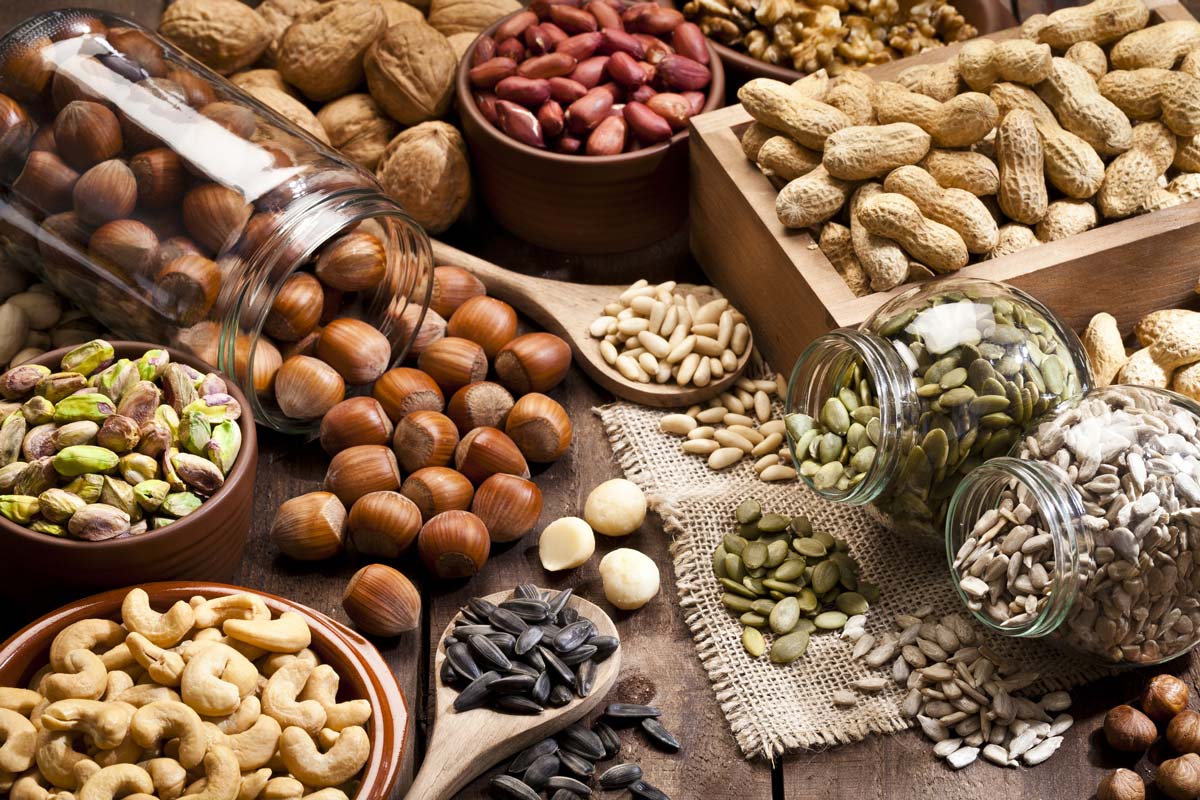
Nuts and seeds may be small, but they pack a giant health and nutritional punch. And many of them are alive, with the potential to turn into the next generation of the plant or tree that they come from. You can benefit from that concentrated life force by including nuts and seeds in your diet.
Technically, nuts are a kind of seed — ones with hard shells — but not all seeds are nuts. The common nuts you can find at many grocery stores include walnuts, almonds, cashews, pecans, pistachios, chestnuts, and Brazil nuts. The seeds you’ll come across most frequently include sesame, sunflower, poppy, pumpkin, hemp, flax, and chia.
Nuts and seeds are rich in high-quality plant proteins and fiber, as well as healthy fats. Some seeds are high in omega-3 fatty acids that are sometimes hard to source in a plant-based diet. They contain antioxidants like tocopherols and phytosterols — walnuts, pecans, and chestnuts have the most of these. And they’re a rich source of minerals like magnesium, iron, phosphorus, calcium, and zinc. A single Brazil nut contains enough selenium to meet double your daily requirement!
Eating nuts and seeds can help you live longer. They may do this by reducing risk factors for heart disease, including high blood pressure and high cholesterol. Walnuts, flaxseeds, and chia seeds have all been shown to suppress the mechanism by which cancer initiates and grows. And nuts can reduce A1c levels, the key marker for diabetes. Men who eat nuts, including peanuts, have shown a reduced risk of developing gallstones. And pistachios may improve the ability to have and maintain erections in men.
You can enjoy nuts and seeds raw or roasted, whole, chopped, as flour, and as nut butter. They’re great as a snack, by themselves or as part of a trail mix. You can sprinkle them over salads and stir-fries, and include them in desserts to provide fat without needing oil or dairy. You can blend them into sauces, dressings, dips, and spreads. And you can turn them into nut and seed milks, blend them into rich and delicious smoothies, and make them into nut cheeses and meat analogs.
Tea and Coffee

Tea and coffee are two of the most popular and most-consumed beverages in the world. And they’re among the healthiest as well. Even though coffee, in particular, gets a bad rap in some corners of the nutrition world, loads of recent research has shown that coffee — in moderation, and only if you can tolerate it without getting “jittery” — may be one of the best habits you can develop in pursuit of a long and vigorous life.
Commonly available teas include black, green, white, matcha, oolong, and herbal varieties. Except for herbal teas, of which there are many, all teas come from the same plant, with the colors and flavors of their leaves resulting from when they’re picked and how they’re processed. There are two main types of coffee — arabica, which is of higher quality and more expensive, and robusta, which can withstand less forgiving soils and climates but is generally considered to have a harsher taste.
The caffeine in coffee and tea has been shown to be anti-inflammatory. And both coffee and tea contain high concentrations of many antioxidants, including catechins, polyphenols, EGCG, vitamin C, and tannins. Matcha tea. in particular, contains about three times as many antioxidants as regular green tea, which is itself an antioxidant champ. Because most people don’t eat a varied diet rich in whole plant foods, the highest sources of antioxidants in many Western diets are actually tea and coffee.
Coffee and caffeinated tea (especially black and green varieties) support cardiovascular health by dilating blood vessels, allowing the heart to work less hard and reducing the risk of ischemic strokes developing from blood clots. Some herbal teas, including chamomile, lavender, lemon balm, and valerian, among others, can help you relax and make it easier to fall asleep. Green tea may be a powerful cancer suppressor. Caffeinated tea and coffee also appear to significantly reduce the odds of developing dementia, and have been shown to be protective against Parkinson’s and other neurodegenerative diseases.
And drinks that naturally contain caffeine can help you be more active, which is associated with dozens of positive health outcomes.
You probably already have a good idea about how to get coffee and teas into your diet — drink them! Avoid adding sugar, for all the well-known reasons, and also cow’s milk, which can block antioxidant activity. Adding lemon to tea, on the other hand, can increase it.
In addition to drinking coffee and tea on their own, you can use them in a variety of beverage recipes, desserts, and even sauces.
Real Superfood Recipes
Supercharge your day with these tasty superfood recipes that are great for breakfast, lunch, dinner, or a wholesome snack any day of the week.
Mighty Green Chia Pudding is a luscious and creamy delight that has four superfood ingredients to power you up for the day ahead. If pudding for breakfast isn’t your thing, it makes a scrumptious snack or dessert as well!
Sweet Potato Carrot Soup with Toasted Sunflower Seeds has bold flavors, bright colors, and numerous superfood ingredients for a soup that is creamy, comforting, and super nourishing.
And, our Superfood Bowl — which richly deserves its name — is a tasty and satisfying plant-based delight that is teeming with a whole lot of plant power!
1. Mighty Green Chia Pudding
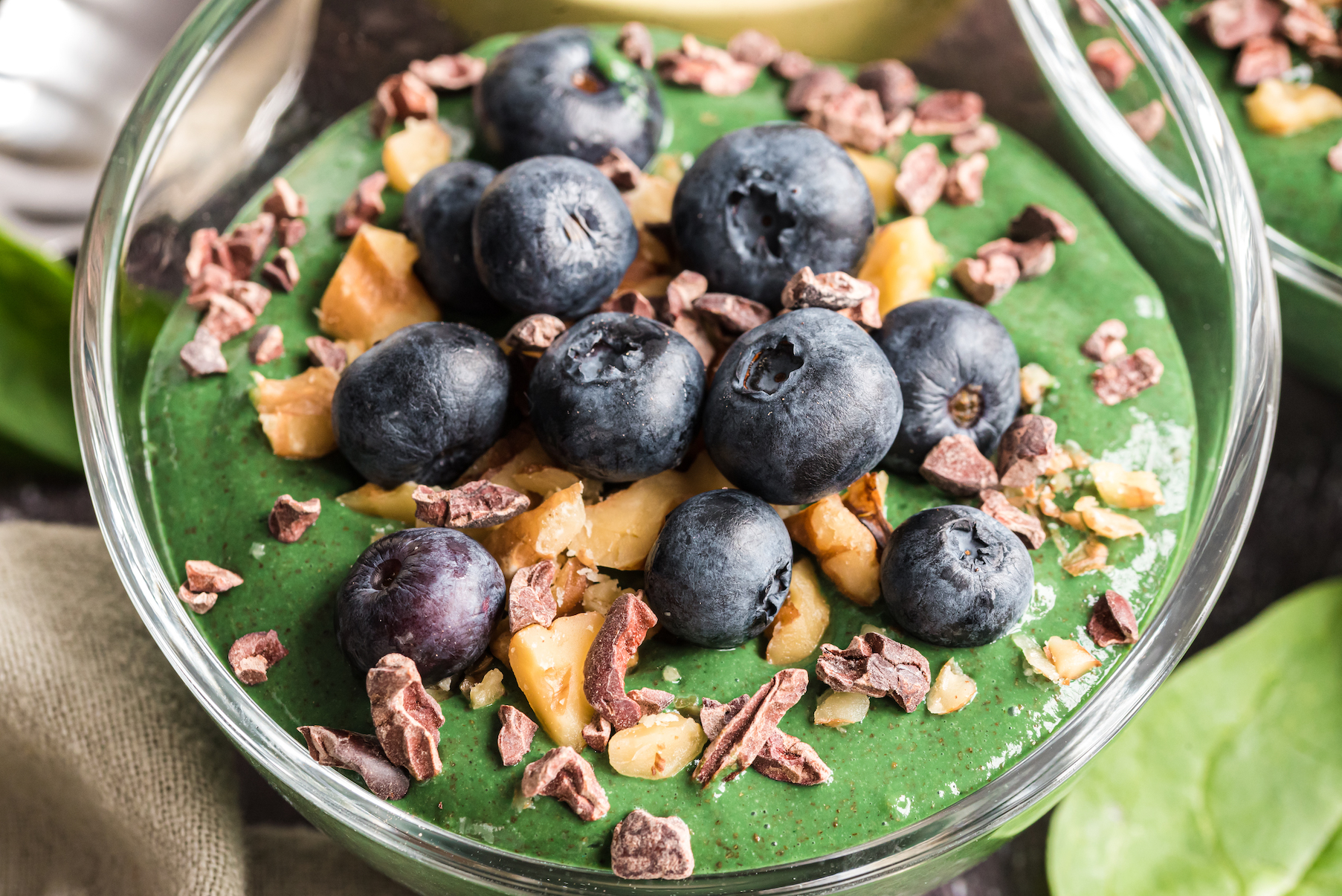
Our Mighty Green Chia Pudding certainly lives up to its name. Green powder (which is optional) and organic spinach are blended with nutrient-rich chia seeds and creamy plant-based milk, then topped with antioxidant-rich blueberries and nutty omega-3-rich walnuts for a luscious green pudding that is super in more ways than one! Plus, this is a great alternative to your daily green smoothie.
2. Sweet Potato Carrot Soup with Toasted Sunflower Seeds
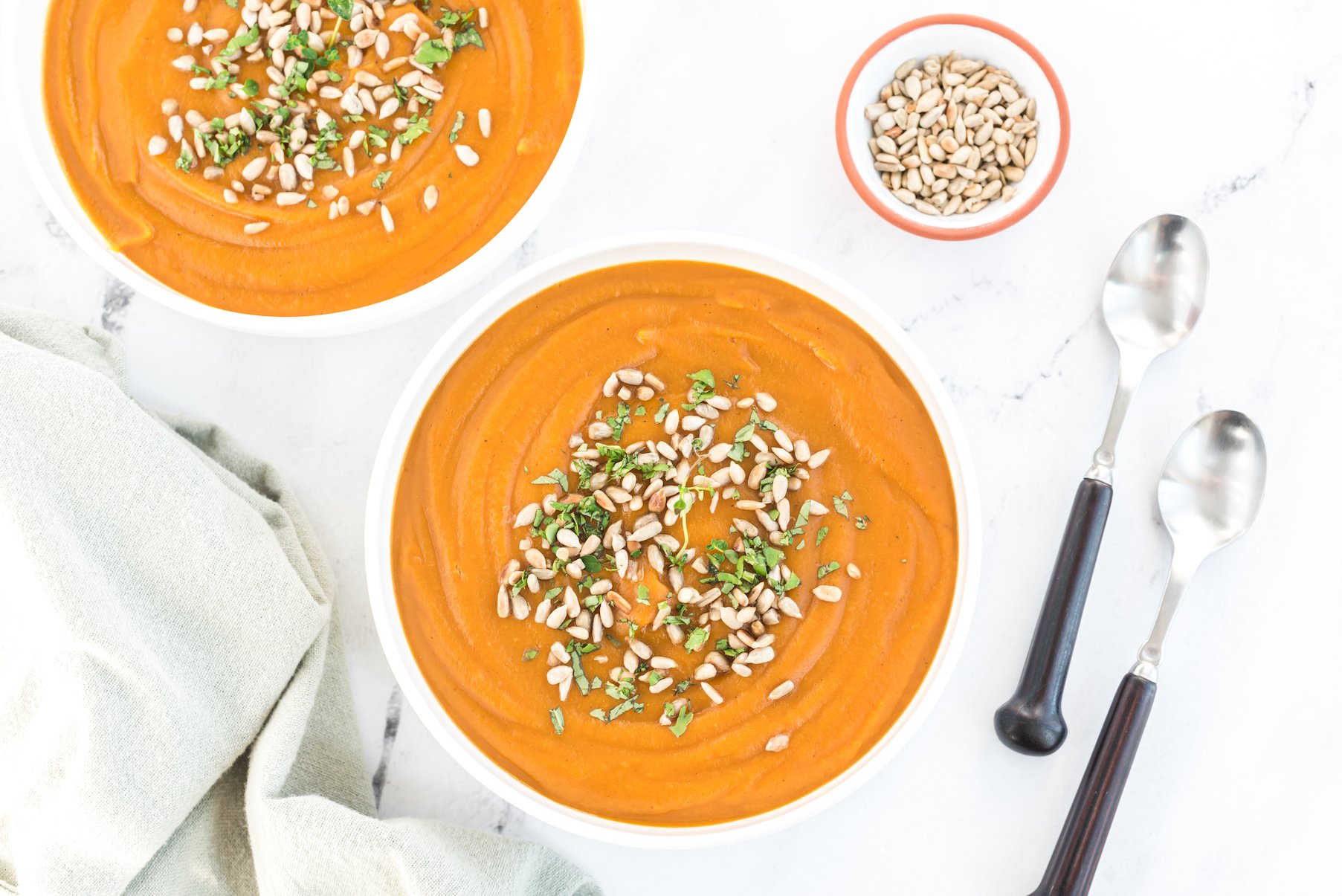
Sweet and super are two adjectives we can’t help but proclaim about this beautifully-hued bowl of goodness. Nutrient-rich carrots and sweet potatoes make for a velvety smooth texture when blended. The root veggies get their vibrant orange colors from carotenoids, compounds that act like antioxidants in the body, scavenging free radicals and protecting you from lifestyle diseases. They’re also both packed with fiber, making this soup not only super for your health, but super satisfying, too!
3. Superfood Bowl

This bowl includes almost every one of our top superfoods. Therefore, we’d say this is the ultimate plant-powered recipe any time you’re craving the super magic of plants! This scrumptious Superfood Bowl features quinoa, lentils, fresh herbs, cauliflower, mushrooms, kale, and a variety of seeds. With all of those powerful ingredients, it’s no surprise that this bowl is teeming with prebiotic fiber, healing phytonutrients, healthy fats, and plant-based protein for a meal that will ignite your superpowers!
Focus on the Real (and Affordable) Superfoods!
The term “superfood” is often used to refer to exotic foods that are high in antioxidants and other health-promoting compounds. But it’s usually at least in part a marketing term to get people on board with buying foods that may be unfamiliar (and that tend to be pricey and come with big marketing budgets).
Many ordinary plant-based foods are real superfoods, especially the most nutrient-dense ones that are disease fighters. Incorporating these accessible superfoods into your diet on a regular basis should give you at least as much benefit as spending the bulk of your grocery budget on exotic ones. I hope this article will guide you toward essential foods to keep in your meal rotations to optimize or improve your health.











































